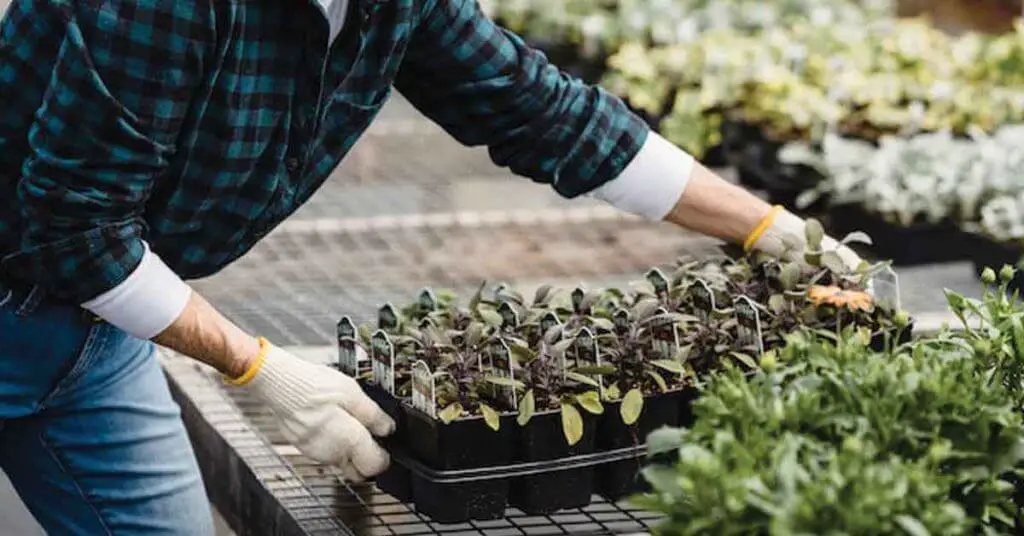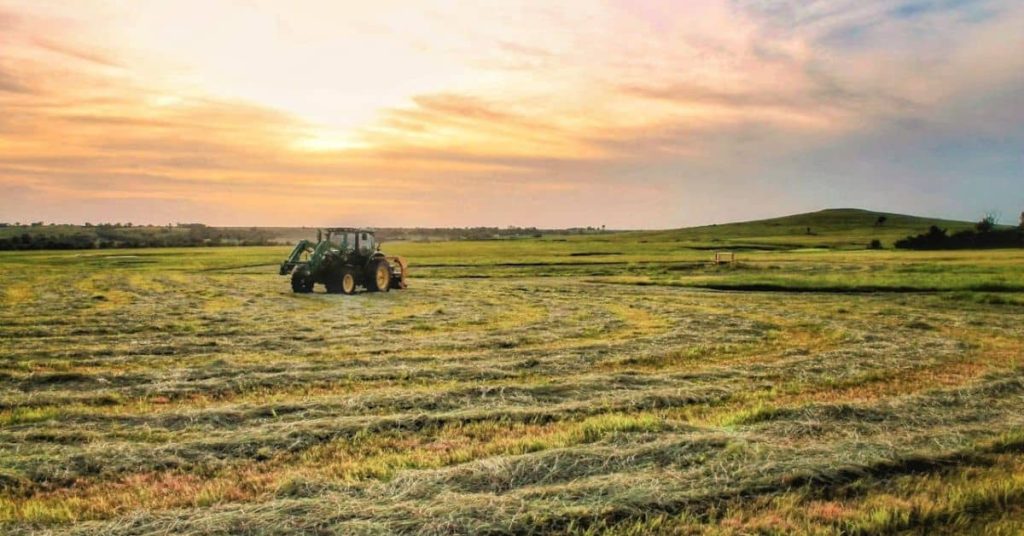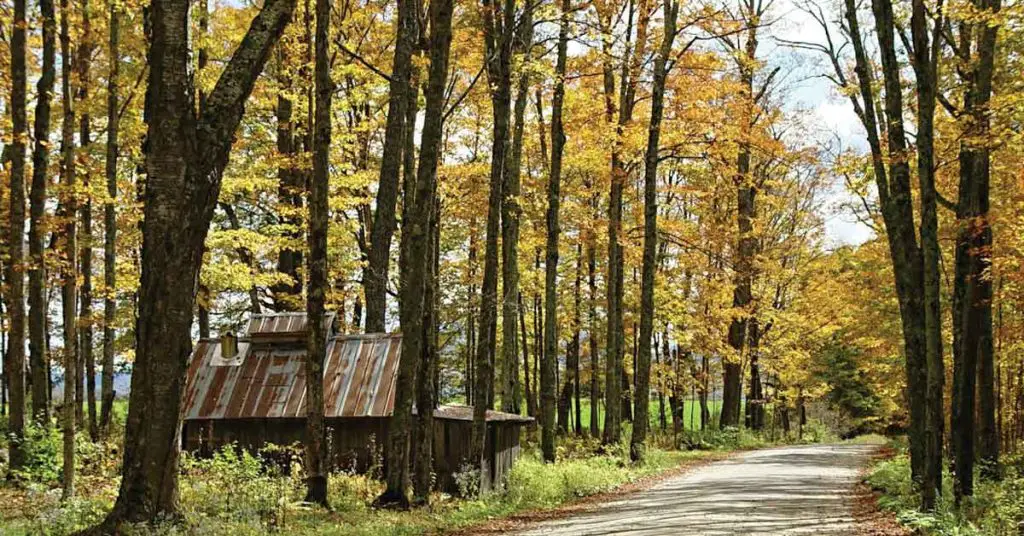Introduction to Homesteading in New Hampshire
Nestled among the rolling hills and majestic mountains, New Hampshire presents a unique tapestry for those seeking a return to the land, a life of self-sufficiency, and a deeper connection with nature. “Homesteading in New Hampshire: Thriving in the Granite State” invites you on a journey through the picturesque landscapes and vibrant seasons of New Hampshire, where the homesteading spirit thrives amidst the challenges and rewards of the Granite State’s diverse environment.
In this introduction, we’ll set the stage for a comprehensive exploration of what it means to homestead in this beautiful corner of the United States. From the frost-kissed autumns that paint the landscape in hues of gold and red to the lush green summers teeming with life, New Hampshire offers a unique backdrop for those looking to cultivate a life rooted in the principles of sustainability, community, and resilience.
As we delve into the heart of homesteading in New Hampshire, we’ll uncover the essential knowledge, practices, and philosophies that define this lifestyle. Whether you’re drawn to the fertile valleys for agriculture, the serene forests for a life off-grid, or the supportive communities that embody the essence of rural living, New Hampshire provides a fertile ground for your homesteading dreams to take root and flourish.
Join us as we navigate the practicalities of land stewardship, seasonal gardening, livestock management, and sustainable living practices tailored to the Granite State’s unique conditions. This guide is not just an introduction to homesteading but an invitation to become part of a growing movement towards a more intentional, earth-connected way of life in New Hampshire.
The Climate and Terrain of New Hampshire
New Hampshire’s diverse climate and varied terrain play pivotal roles in shaping the homesteading experience. To thrive, understanding these elements is essential.
Navigating Growing Seasons and Hardiness Zones
- Growing Season: Spanning approximately 149 days, typically from May 7 to October 3, this period is crucial for crop planning.
- Hardiness Zones: Ranging from zones 3 to 6, these zones influence the variety of crops that can be successfully grown, including vegetables and fruits like asparagus, cucumbers, and apples.
- Season Extension Techniques: Utilizing greenhouses or starting seedlings indoors can effectively extend the growing season.
- Rainfall: With an average annual rainfall of about 46 inches, water is generally plentiful, though adherence to water use regulations is important for sustainability.
Adapting to the Diverse New Hampshire Terrain
- Landscapes: The state’s rolling hills, forests, and lakes offer unique opportunities and challenges, impacting both crop cultivation and livestock rearing.
- Livestock Grazing: Space requirements vary, with smaller animals needing less and larger animals like cows or horses requiring 2 to 5 acres each for grazing.
- Soil Types: Ranging from sandy to clayey, with a tendency towards high acidity, soil composition is a critical consideration for crop suitability and growth.
- Soil Testing: Recommended to determine pH levels, nutrient content, and necessary amendments for optimizing crop health and yield.
- Zoning Laws: Essential to understand as they may dictate the permissible types of crops and livestock, affecting homestead planning and development.
In summary, aligning homesteading practices with New Hampshire’s climate and terrain is key to achieving a sustainable and productive homestead. By adapting strategies to these environmental factors, homesteaders can enhance their success and sustainability.
Establishing Your Homestead

Laying the groundwork for a homestead in New Hampshire involves careful planning around land size, compliance with local regulations, and preparing the land for farming. Here’s a structured approach to these essential steps:
Understanding Acreage Requirements and Local Zoning Laws
- Assessing Land Needs: Your homesteading plans, such as the types and numbers of livestock or the scale of crop production, dictate the amount of land required. Small animals like chickens need minimal space, while larger livestock may need 2 to 5 acres each.
- Navigating Zoning Laws: Local regulations can influence various aspects of homesteading, from construction permits to animal keeping. It’s crucial to consult with local zoning offices to ensure your homestead complies with all regulations and to avoid potential legal challenges.
Selecting and Preparing Land for Agriculture
- Choosing the Right Location: The success of your homestead heavily relies on selecting land that meets your agricultural needs. Factors to consider include exposure to sunlight, soil quality, and water access, all of which should align with your farming goals.
- Conducting Soil Testing: Understanding the soil’s pH, nutrients, and composition through testing is vital, especially in New Hampshire where soils tend to be highly acidic. This step is essential for determining the need for soil amendments such as lime or organic matter to optimize conditions for crop growth.
- Amending Soil: Based on soil test results, you may need to adjust the soil’s pH or nutrient levels. For acidic soils, lime can be added to increase pH, while organic materials can help lower pH for alkaline soils. These adjustments are crucial for creating a conducive environment for your chosen crops.
By thoroughly understanding the requirements and preparing your land accordingly, you’ll set a solid foundation for a productive and sustainable homestead in New Hampshire. Engaging with the local homesteading community and utilizing resources like agricultural extensions can also provide valuable support and insights as you begin your homesteading journey.
Cultivating a Thriving Homestead
To build a flourishing homestead in New Hampshire, careful selection of crops and livestock tailored to the local environment is essential. Here’s how to navigate these key areas:
Choosing the Right Crops for Your Homestead
- Growing Season and Hardiness Zones: As previously mentioned, New Hampshire’s growing season averages 149 days, typically from May to October. The state spans USDA hardiness zones 3 to 6, accommodating a variety of crops.
- Crop Selection: Suitable crops include vegetables like asparagus, cucumbers, and squash, and fruits such as apples and blueberries. Consider the specific hardiness zone of your area when selecting crops.
- Soil Management: The state’s soil is often highly acidic, necessitating soil testing and possible amendments like lime to increase pH or organic matter to decrease it, ensuring optimal growth conditions for your crops.
- Water Use: With around 46 inches of annual rainfall, water is generally abundant, but adherence to state water use regulations is crucial for sustainable practices.
Raising Livestock in the Granite State
- Containment and Shelter: Livestock must be kept in barns or fenced areas, with adequate shelter provided to protect them from weather extremes. Simple structures like three-sided shelters can suffice.
- Livestock Choices: The choice of livestock depends on your homestead’s size and terrain. Smaller animals require less space, while larger ones need more grazing area.
- Zoning and Regulations: Familiarize yourself with local zoning laws affecting livestock types and housing, ensuring your homestead complies with all regulations.
Implementing these strategies, while staying informed about local agricultural practices and regulations, will help ensure the success and sustainability of your homestead in New Hampshire. Engaging with the local homesteading community and utilizing resources like agricultural extensions can offer additional insights and support. For more detailed information, visit Hello Homestead and Texas Real Food.
Sustainable Practices and Self-Sufficiency

To establish a sustainable and self-sufficient homestead in New Hampshire, integrating eco-friendly agricultural methods, exploring off-grid living, and harnessing renewable energy are crucial steps.
Implementing Sustainable Farming Practices
- Soil Conservation and Water Quality: The adoption of no-till, reduced-till, and cover crop practices has been on the rise among New Hampshire farmers. These methods help in reducing soil erosion, improving soil fertility, and maintaining water quality. Cover crops, in particular, play a significant role in protecting the soil from erosion, enhancing soil health, and providing habitats for beneficial organisms.
- Organic Farming: Embracing organic farming techniques can further contribute to the sustainability of your homestead by eliminating the use of synthetic fertilizers and pesticides, thereby preserving the natural ecosystem and promoting biodiversity.
Exploring Off-Grid Living Options
- Sustainability and Resilience: Off-grid living in New Hampshire is feasible and can significantly enhance your homestead’s sustainability. While state laws are accommodating, it’s essential to check local zoning restrictions and requirements that might affect the installation of alternative energy systems or other off-grid components.
Harnessing Renewable Energy
- Solar and Wind Energy: New Hampshire’s climate is conducive to utilizing solar power, with ample sunlight available for most of the year. Additionally, small-scale wind turbines can be an effective complement to solar energy, subject to local regulations. These renewable energy sources can reduce your reliance on traditional power grids, lower energy costs, and decrease your carbon footprint.
By integrating these sustainable practices and self-sufficiency measures, your homestead in New Hampshire can thrive while minimizing its environmental impact. Engaging with local communities, agricultural extensions, and sustainability experts can provide further insights and support in your journey towards a more sustainable homestead.
The Homestead Economy
The economy surrounding homesteading in New Hampshire is an integral part of the state’s broader economic and community landscape, bolstered by supportive food production regulations and a robust local food culture.
From Farm to Market: Navigating Cottage Food Laws
- Cottage Food Exemptions: New Hampshire allows the sale of certain homemade foods without a Homestead Food License, given adherence to safety guidelines and a sales limit, enhancing economic opportunities for small-scale producers.
- Labeling Requirements: Essential labeling includes the producer’s contact information, ingredients, allergen notices, and a disclaimer about exemption from state licensing and inspection, ensuring consumer safety and transparency.
Economic and Community Development Through Homesteading
- Boosting Local Economies: Homesteaders contribute to the local economy through direct sales, offering community access to unique, locally-produced items, thereby supporting local economic growth.
- Strengthening Community Bonds: By engaging in local markets and agricultural activities, homesteaders foster community connections, share knowledge, and support a sustainable local food system.
- Environmental and Social Benefits: Beyond economic contributions, homesteading promotes environmental stewardship, preserves traditional skills, and enhances community well-being.
Homesteading in New Hampshire, supported by cottage food laws, plays a significant role in nurturing local economies and communities, underscoring the value of small-scale, sustainable food production and the homestead lifestyle.
Health, Well-Being, and Community

Homesteading in New Hampshire offers a unique blend of lifestyle choices that can significantly enhance health, well-being, and community ties. This section delves into the myriad benefits that homesteading provides and how it fosters a strong, supportive community.
Fostering Health and Well-Being Through Homesteading
Homesteading isn’t just a way of living; it’s a pathway to improved physical and mental health. Here’s how:
Physical Health Benefits
- Nutritious Eating: Growing your own food ensures access to fresh, organic produce, leading to a healthier diet rich in vitamins and minerals.
- Physical Activity: Daily homesteading tasks, such as gardening and animal care, provide regular, low-impact exercise, promoting physical fitness.
- Outdoor Exposure: Spending time outdoors in the fresh air and sunlight can improve vitamin D levels, supporting bone health and immune function.
Mental Health Advantages
- Stress Reduction: The tranquility of a natural setting and the rhythm of homesteading tasks can help lower stress levels.
- Sense of Accomplishment: Successfully growing your own food and maintaining a homestead provides a strong sense of achievement and purpose.
- Connection to Nature: Being in tune with the cycles of nature can enhance mindfulness and overall mental well-being.
Building a Supportive Homesteading Community
Homesteading thrives on community support and engagement. Here’s how homesteaders in New Hampshire can build and benefit from a supportive community:
Networking with Fellow Homesteaders
- Sharing Knowledge and Resources: Engaging with other homesteaders allows for the exchange of valuable insights, seeds, and equipment.
- Cooperative Projects: Working together on larger projects can help build strong bonds and achieve goals that might be challenging to accomplish individually.
Leveraging Educational Programs
- Workshops and Classes: Participating in local agricultural programs and workshops can enhance your homesteading skills and knowledge.
- Youth Involvement: Involving children in homesteading activities through programs like 4-H can teach them valuable life skills and foster a sense of community responsibility.
Engaging with the Wider Community
- Farmers’ Markets and Local Events: Selling produce and homemade goods at local markets not only supports the local economy but also strengthens community ties.
- Community Gardens and Projects: Contributing to community gardens or local sustainability projects can help spread the principles of homesteading and environmental stewardship.
By embracing the homesteading lifestyle, individuals can enjoy a healthier, more fulfilling life while contributing to the creation of a vibrant, supportive community. The journey of homesteading in New Hampshire, with its emphasis on health, well-being, and communal support, exemplifies how returning to simpler, more sustainable living practices can enrich our lives and the world around us.
Education and Support for Homesteaders
In New Hampshire, homesteaders have access to a wealth of resources and support networks designed to enhance their knowledge and skills in sustainable living and farming.
Leveraging Educational Resources and Extension Services
UNH Extension offers extensive support for homesteaders, from agricultural business management to food safety, and from dairy, livestock, and forage crops to soil conservation and water quality. These resources are aimed at helping homesteaders navigate the various aspects of sustainable agriculture and homesteading:
- Agricultural Business Management: Provides guidance on legal and taxation issues, financial planning, estate and succession planning, labor training, and marketing strategies.
- Dairy, Livestock, and Forage Crops: Offers insights into production techniques, feed and forage management, and soil conservation practices to ensure environmental sustainability.
- Food Safety: Educates on safe food handling and processing to ensure the health and well-being of the community and compliance with regulatory standards.
- Fruit and Vegetable Crops: Covers applied research, crop-specific guidance, high tunnel production, and more to help homesteaders maximize their yield and crop health.
These services are complemented by community and economy resources that focus on community leadership, economic development, and promoting a nature-based economy, further supporting the homesteading lifestyle in New Hampshire.
Engaging with Farmer Support Networks
The Small and Beginner Farmers of New Hampshire (SBFNH) was a notable organization dedicated to connecting farmers, sharing ideas, and providing access to agricultural education and technical assistance. Although it’s important to note that as of late 2023, SBFNH has voted to dissolve due to various challenges. This highlights the dynamic nature of support networks and the importance of staying engaged with current resources and organizations that continue to support the farming and homesteading community in New Hampshire.
By tapping into these educational resources and support networks, homesteaders in New Hampshire can greatly enhance their skills, contribute to the sustainability of their operations, and foster a stronger, more connected community of like-minded individuals committed to the principles of homesteading..
The Role of Natural Resources

The sustainable management of land, water, and wildlife is a cornerstone of successful homesteading in New Hampshire. Here are some strategies for integrating these natural resources into your homesteading practices effectively:
Managing and Conserving Natural Resources
- Hedgerows and Vegetation Management: Creating and maintaining hedgerows not only enhances biodiversity but also provides essential habitats for various wildlife species. These hedgerows, which can be 30 to 50 feet wide, serve as escape cover, food sources, rest areas, and travel corridors for wildlife. By allowing natural vegetation to fill in around these areas and implementing periodic maintenance, such as mowing or burning, you can ensure these habitats continue to support wildlife effectively.
- Wildlife Habitats: Snags, cavity trees, and brush piles play critical roles in supporting birds and other wildlife. Retaining trees with cavities and snags of different heights can benefit a wide range of species by providing drumming, food, and perch sites. Brush piles, created from logs and smaller limbs, offer dense cover and nesting areas for wildlife, enhancing the biodiversity of your homestead.
- Artificial Nest Boxes: To supplement natural habitats, consider installing artificial nest boxes, which can support species like eastern bluebirds, kestrels, and bats. Placing these boxes at strategic locations can help control pest populations and promote a balanced ecosystem.
- Integrated Pest Management (IPM): Embracing IPM strategies can reduce the reliance on chemical pesticides, promoting a healthier environment for both your homestead and the surrounding natural habitats. Techniques such as crop rotation, alternative planting dates, and the encouragement of natural pest predators can help manage pest populations effectively.
- Farm Pond Management: If your homestead includes a farm pond, managing it with an eye towards conservation can attract diverse wildlife while preventing soil erosion. Limiting livestock access to the pond and allowing vegetation to grow around the shoreline can create a more stable and biodiverse aquatic habitat.
- Plantings for Wildlife: Assessing the existing vegetation on your property and supplementing it with strategic plantings can enhance food and cover for wildlife. Trees like black cherry, oaks, and dogwoods, along with shrubs like blueberry and sumac, can provide significant benefits to wildlife on your homestead.
By implementing these strategies, you can ensure that your homesteading practices not only support your self-sufficiency goals but also contribute to the conservation of New Hampshire’s rich natural resources, fostering a healthier environment for all inhabitants. For more detailed guidance on these practices, resources provided by UNH Extension, such as the Wildlife Habitat Improvement and Habitat Stewardship Brochures, can be incredibly valuable. Additionally, for water and wetlands conservation, the UNH Extension’s resources offer a wealth of information tailored to New Hampshire’s unique environmental context.
Recap: Homesteading in New Hampshire
Embarking on the homesteading journey in New Hampshire offers a unique blend of challenges and rewards, deeply rooted in the state’s diverse climate, terrain, and community spirit. This guide has traversed the essentials of establishing a homestead, from understanding local regulations and selecting suitable crops and livestock to embracing sustainable practices and harnessing natural resources.
Key Takeaways:
- The importance of adapting homesteading practices to New Hampshire’s varied climate and hardiness zones to ensure agricultural success.
- Strategies for sustainable land, water, and wildlife management that not only support your homestead but also contribute to environmental conservation.
- The role of community and educational resources in enriching the homesteading experience, providing support, knowledge, and a sense of belonging among like-minded individuals.
For those inspired to delve deeper into homesteading in New Hampshire, the journey is rich with opportunities for growth, learning, and connection with the land and community. Whether you’re drawn to the practical aspects of self-sufficiency or the broader goals of sustainability and conservation, New Hampshire’s landscape and resources offer a fertile ground for exploration and development.
For more detailed information and resources, consider exploring UNH Extension’s offerings on homesteading, wildlife habitat improvement, and water and wetlands conservation, as well as other local and online resources tailored to the needs and interests of New Hampshire homesteaders.
Disclaimer: The information provided in this article is for general informational purposes only and is not intended to be a substitute for professional advice. The author of this article does not claim to be an expert in homesteading and the information provided should not be relied upon to make decisions about your own homesteading journey. Please do your own research and consult with a qualified professional before making any decisions about your homestead.
Share via:
Shaun Alexander is the main writer and editor for HomesteadingSimple.com. With a strong passion for homesteading and sustainability, Shaun has dedicated his life to learning and sharing information about a simple, fulfilling existence tied to the land. His expertise ranges from gardening and livestock management to off-grid living and DIY projects, reflecting the diverse skills necessary for a successful homesteading lifestyle. Shaun’s goal is to inspire and educate others about the possibilities of homesteading, whether in rural, suburban, or urban settings, and to provide practical advice and tips for both beginners and seasoned homesteaders. He believes in a future where more people return to their roots, embracing a life of self-sufficiency and harmony with nature.





